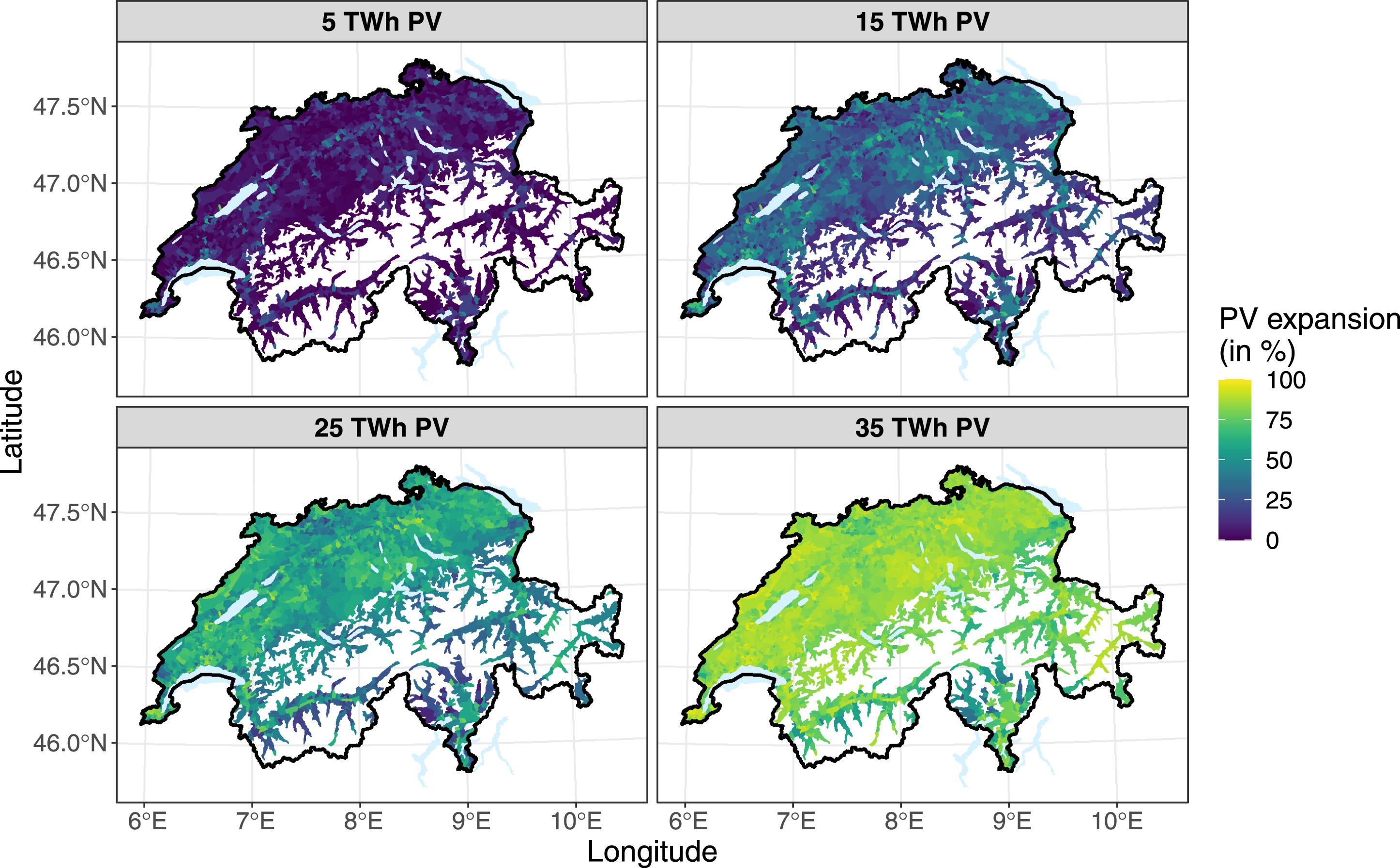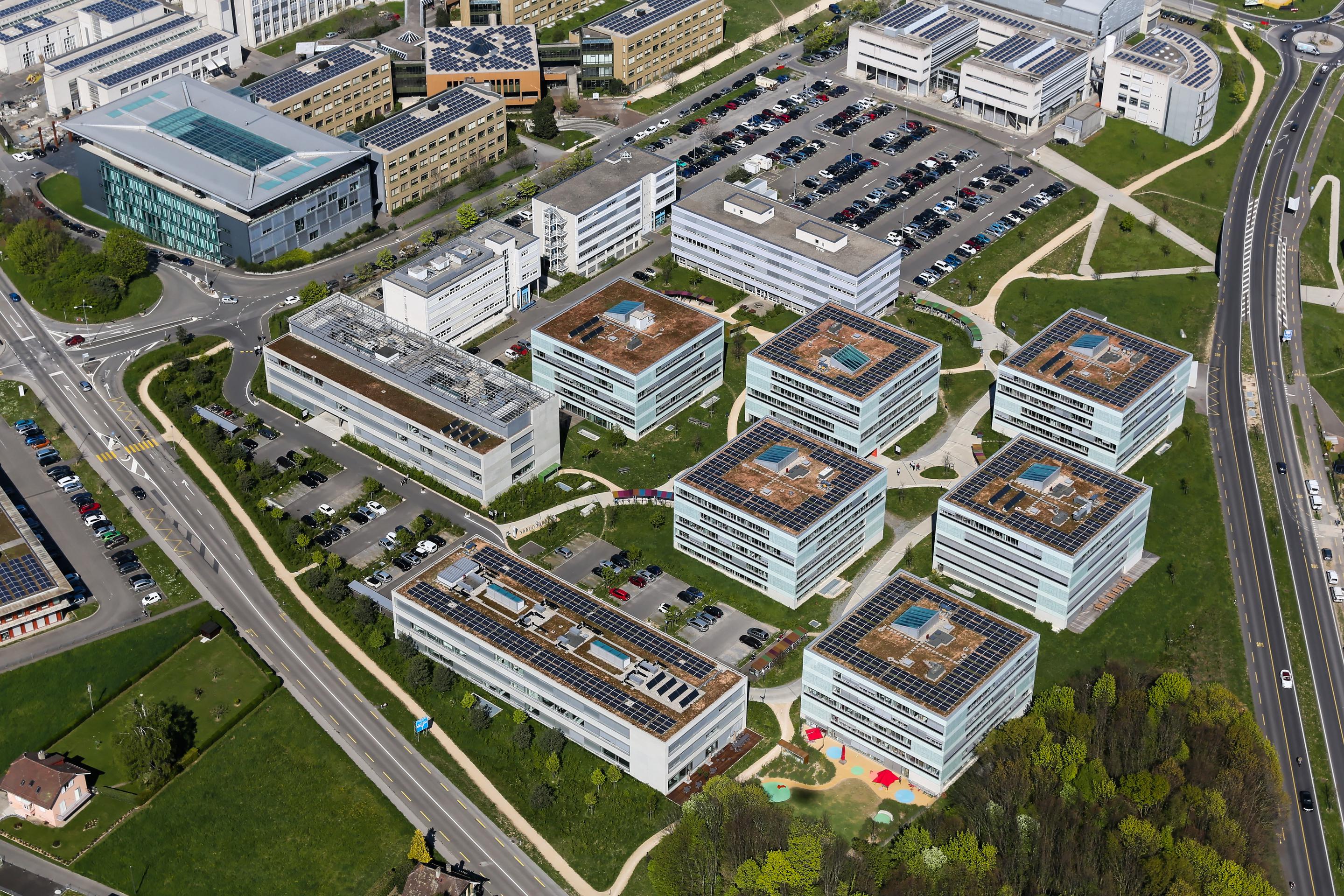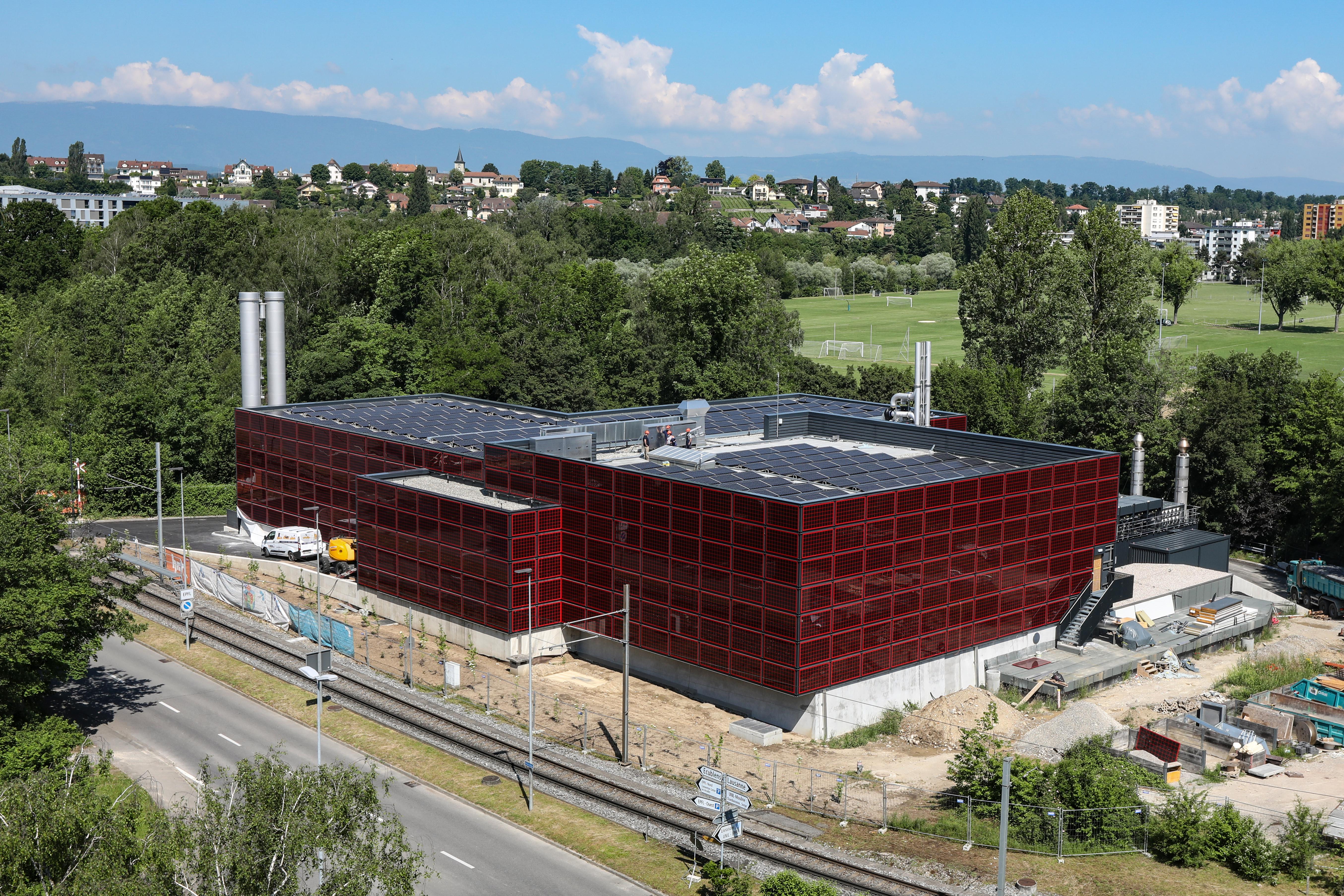Energy Strategy 2050: the potential of millions of Swiss rooftops

© 2023 Solstis - CC-BY-SA 4.0
Five million rooftops in Switzerland – more than half of the nationwide total – are suitable for generating power. A review of two solar photovoltaic development strategies has shown that combining the two approaches could cause over two-thirds of Swiss towns and cities to become energy self-sufficient.
As part of its Energy Strategy 2050, the Swiss federal government is targeting a rapid expansion of the country’s solar photovoltaic installed base, with an aim of generating 35 terawatt-hours (TWh) of power from renewables (excluding hydropower) in 2035, and 45 TWh in 2050. How can these goals be achieved in a way that’s both efficient and fair to individual towns and cities?
It’s widely accepted that solar power will play a key role in decarbonizing Switzerland’s energy mix – which is why rooftop energy potential has long been a research topic for scientists at the Solar Energy and Building Physics Laboratory (LESO-PB) within EPFL’s School of Architecture, Civil and Environmental Engineering (ENAC).

for all inhabitable areas in Switzerland.
© 2023 EPFL / Alina Walch Martin Rüdisüli - CC-BY-SA 4.0
For her PhD thesis, Alina Walch assessed the potential of renewable energy systems, taking a cross-disciplinary approach that combines big data with machine learning (often referred to generically as artificial intelligence, or AI). She developed and then compared two scenarios for expanding Switzerland’s solar photovoltaic installed base so as to achieve – or even exceed – the Energy Strategy 2050 targets, working in conjunction with Dr. Martin Rüdisüli, an expert in energy-system modeling at the Swiss Federal Laboratories for Materials Science and Technology (Empa) in Dübendorf. “We carried out the research together, drawing on my knowledge of solar photovoltaic modeling and Martin’s experience in assessing different scenarios for expanding this form of power as part of the energy transition,” says Walch.

© 2024 EPFL/Alain Herzog - CC-BY-SA 4.0
North-facing roofs
Before she could generate forecasts of Swiss rooftops’ solar-power potential in 2050, Walch first had to establish a basis for her estimates and make some assumptions. Which kinds of rooftops should she consider for her model? Should she take a flexible approach and also include rooftops that receive less sunlight or that are oriented due north? To begin with, she decided to include only rooftops that were entirely or mainly south-facing. “But we eventually discovered that north-facing rooftops with a pitch angle of less than 20 degrees could also be candidates for highly productive solar-power installations,” explains Walch. She therefore added these rooftops to her model as well – and her estimate of Switzerland’s total solar-power potential jumped by 25%. “We calculated the maximum potential of all Swiss rooftops,” says Walch. “But, with the clock ticking, there’s a more pressing question: what strategies are needed to meet the federal government’s targets as quickly as possible?”

Number of roofs needed to achieve a PV expansion target
© 2023 EPFL / Alina Walch Martin Rüdisüli - CC-BY-SA 4.0
Strategy 1. Prioritize large, flat roofs
The key to efficient power generation is to make the best use of available roof space. Large, gently sloping roofs – such as those found on industrial and agricultural buildings – clearly offer the highest solar potential. Crucially, these roofs have few skylights, chimney stacks and other superstructures, and the buildings themselves tend to be located away from built-up areas, meaning the solar panels are less of an eyesore. According to Walch’s calculations, fitting solar photovoltaic systems onto just 4% of such rooftops would raise annual output to 15 TWh. Moreover, this approach would keep the number of separate installations to a minimum, helping to reduce both costs and carbon emissions. And equipping a further 2.5 million rooftops with solar panels would be a quick and easy way to achieve the 2050 target of 45 TWh. But, as with all things, there’s a drawback: urban areas lack the necessary rooftop real-estate to meet their power needs under this approach, meaning the benefits would be unevenly distributed.
Strategy 2. Balance electricity production
Walch then considered how this first strategy could be tweaked to make solar-power generation more regionally balanced. For instance, she considered what would happen if solar panels were fitted to the rooftops of all residential buildings. “We ran simulations to find out how much power each district would need to generate in order to become self-sufficient,” she says. “Rural towns could easily cover their power needs – without even having to tap into their full potential. But for cities, self-sufficiency is a near-impossible goal, so there’s an imbalance that we can’t correct for.” While this second strategy would better meet power demand on a regional level, solar panels would have to be installed on 4 million rooftops in order to achieve the federal government’s targets.

© 2024 EPFL/Alain Herzog - CC-BY-SA 4.0
Maximizing self-sufficiency
In today’s perfect storm of climate change, geopolitical uncertainty and other global pressures, energy security has become a major concern. Walch believes that the answer lies in generating power close to where it’s needed: “Our latest analysis shows that the best option is a compromise between the two strategies – one that harnesses the potential of both industrial and residential rooftops. The ideal approach is to start by fitting solar panels onto the biggest roofs in each city until the targets are met. After this point, once a city’s energy needs are covered by renewables, limits should be placed on any new installations.”

© 2024 EPFL/Alain Herzog - CC-BY-SA 4.0
Paper appearing in Journal of Physics
https://doi.org/10.1016/j.apenergy.2023.121262
A critical comparison of methods to estimate solar rooftop photovoltaic potential in Switzerland
Alina Walch1, Nahid Mohajeri2 and Jean-Louis Scartezzini1
Swiss Renewable Energy Data
Data issued from the HyEnergy project of the National Research Programme 75 ‘Big Data’ (NRP 75) supported by the Swiss National Science Foundation (SNSF) are provided in free access on the plateform HyEnergy Data using the link https://hyenergy.epfl.ch/ These data comprise the annual energy potential of (i) PV solar power plants on building roofs, (ii) wind turbines and (iii) ground-connected heat pumps for Switzerland. They rely on primary data collected by Swiss Federal Offices (SwissTopo, FSO, SFOE) and on digital images from satellites and remote sensing monitoring. Their analysis is based on advanced statistical methods and Machine Learning. See NRP75 webpage www.nfp75.ch for further information.